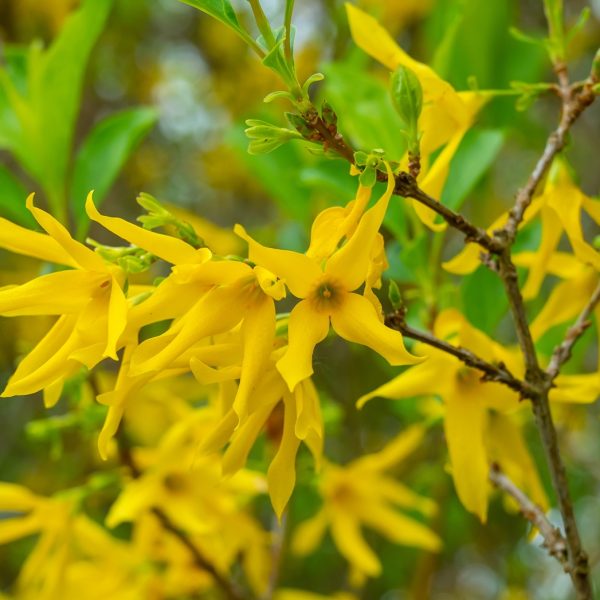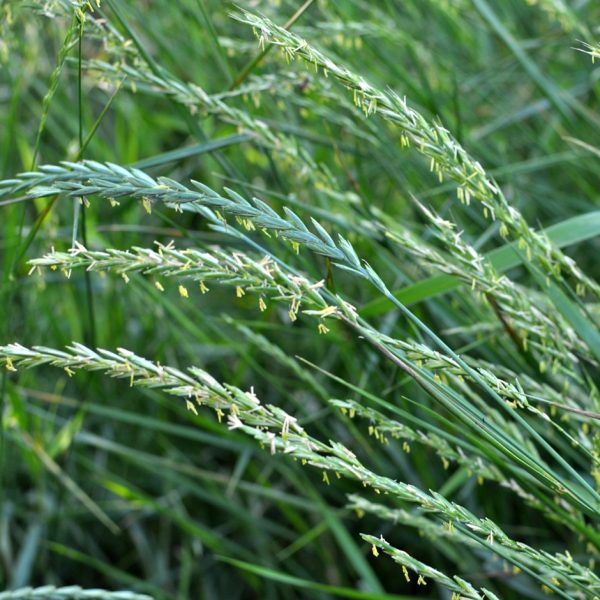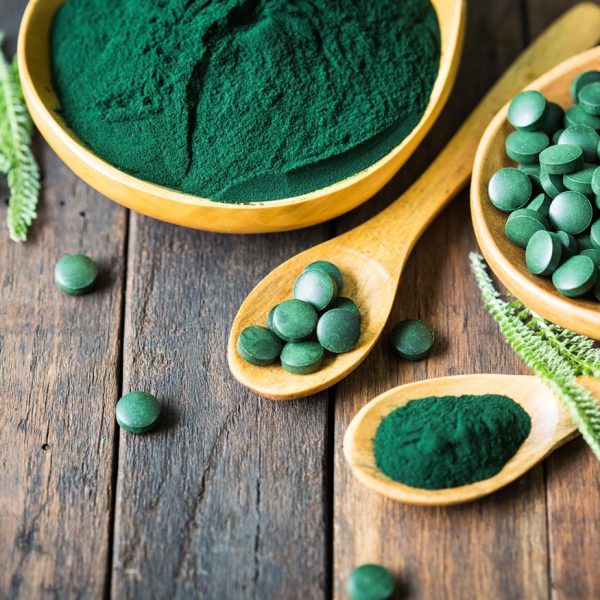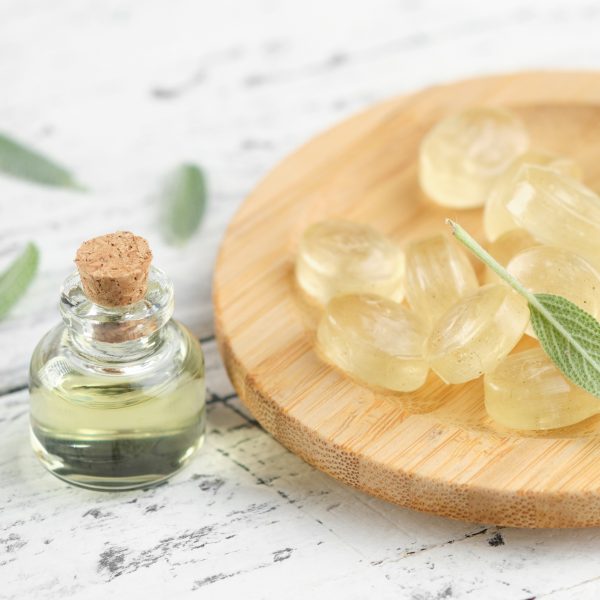Bronchitis is a lower respiratory tract infection. Find out more about the causes, symptoms and herbal treatments of bronchitis.
Understanding bronchitis

Bronchitis is a lower respiratory tract infection, characterised by inflammation of the airways. It tends to cause a cough, and can be acute (short-lived), or chronic (ongoing or recurring).
Bronchitis is one of the most common causes of cough (alongside the common cold) and is thought to rank among the top 10 outpatient conditions in the United States, affecting around 5% of adults there annually (1), with rates peaking during the winter season.
In the UK similar figures for bronchitis are reported, with incidences of 54 in 1000 people, which becomes higher in people over 85 years of age, who seem to be more vulnerable to respiratory tract conditions (1).
How does bronchitis work?

Bronchitis is characterised by inflammation of the bronchi lining, bronchi being the large- and medium- sized air passages leading from the trachea (windpipe) to the lungs. The inflammation in the bronchi leads to thickening of mucous, which is naturally present on mucosal epithelial lining of the bronchi (epithelium can be thought of as skin on the inside of the body).
A protective mechanism called the mucociliary escalator usually keeps the respiratory system clear of foreign particles and pathogens. The mucociliary escalator comprises of cilia, which are fine hair-like structures lining the respiratory mucosa, and the natural mucosal layer which usually coats this. A rhythmical movement of the cilia, combined with the presence of mucous allow foreign particles and pathogens to be carried up and out of the respiratory system (or ‘expectorated’).
The structure of the cilia and the quality of the mucous play an important role in the function of mucociliary clearance from the lungs, both of which are altered during bronchitis due to the presence of inflammation, making the mucociliary escalator less efficient. The other respiratory clearance mechanism of coughing becomes more persistent. Inflammation in the bronchi results in a combination of changes which exacerbates the cough:
- The presence of thicker mucous which is less effective in expectoration of particles and pathogens and can create a feeling of congestion in the airways.
- Changes in the epithelial lining, called ‘epithelial cell desquamation’, a mechanism which helps to renew the mucous membrane, but in the process creates further debris to be cleared / expectorated.
Needless to say, bronchitis is accompanied by a cough, which may be productive or dry depending on the quality of the mucous and effectiveness of the cough reflex.
Bronchitis is usually classed as acute or chronic.
Acute bronchitis
Acute bronchitis is very common and what is usually referred to when speaking of bronchitis, we will cover acute bronchitis in this article. Acute bronchitis will often resolve naturally without treatment, and most people recover within less than three weeks. It can be infectious, spreading through cough droplets, making it important to contain the cough with the hand or tissues, and to wash hands often.
Chronic bronchitis
Chronic bronchitis is less common and refers to cases of bronchitis which are ongoing for three months or more, or where recurrent long-lasting bronchitis occurs for two or more consecutive years. Chronic bronchitis is usually a result of a wider set of chronic respiratory conditions known collectively as chronic obstructive pulmonary disease (COPD) and tends to occur due to already compromised airways, rather than as a stand-alone condition (2, 3).
Understanding the root
In most cases, acute bronchitis is of viral origin, and in around 10% or less cases it is bacterial (4). In some instances, viral upper respiratory infections can result in bronchial inflammation and progress to lower respiratory tract infections such as bronchitis.

Common viral causes include cold and flu viruses (adenovirus and rhinovirus), and COVID-19 viruses. Acute bronchitis is now recognised as part of the spectrum of illness that can occur with SARS-CoV-2 infection (5).
In the rarer cases that acute bronchitis is of bacterial origin, the pathogens most commonly identified are Mycoplasma pneumoniae, Chlamydia pneumoniae, and Bordetella pertussis (1).
Risk factors for developing acute bronchitis include a history of smoking, living in polluted areas, crowded living conditions, and a prior history of asthma. Specific allergens such as pollen, perfume, and vapours can potentially trigger acute bronchitis in susceptible individuals (1)
A study of 164 patients with acute bronchitis who had been vaccinated against influenza, revealed that 37% of cases were of viral origin, and of these 21% were attributed to rhinovirus (the flu virus) (6). This indicates that vaccinations do not always grant immunity against viral infections which can lead to bronchitis and suggests that providing rounded immune support may be a helpful adjunct in preventing and treating cases of bronchitis.
It is also worth noting that only in the rarer cases of bacterial bronchitis may antibiotics help to improve the condition. When antibiotics are given in cases of viral bronchitis, it is unlikely that they will improve the condition. Antibiotics may be a helpful course of treatment in individuals who have other conditions compromising respiratory or immune function, where viral bronchitis may progress to a bacterial infection, and there is a risk of developing more serious complications such as pneumonia.
Acute bronchitis in otherwise healthy patients is a major cause of antibiotic overuse (5). The overuse of antibiotics contributes to the antibiotic crisis currently seen due to this overuse whereby many strains of bacteria are becoming resistant to antibiotic treatment.
Medical professionals recommend that most bronchitis patients require only symptomatic treatment (2, 5).
There is much scope with herbal medicines and lifestyle changes to provide overall immune support, reducing risk of developing bronchitis, and supporting the body in efficient recovery.
Signs and symptoms
The following symptoms can show in bronchitis (2, 7):
- Cough with mucous (which may be clear, white, yellow, or green in colour)
- Chest pain when coughing
- Tiredness
- High temperature
- Shortness of breath
- Wheezing
- Runny nose
Safety note: It is important to seek medical assistance immediately if you cough up blood, and if you have a cough that lasts more than three weeks it is recommended to see a doctor (2).
Herbal solutions
In light of the antibiotic crisis, and lack of guaranteed immunity to viruses from vaccinations, a sensible course of action is to support the body in sustaining strong defence systems that will ward off infections before they develop into bronchitis and/or ensure that they are short-lived should they arise.
Herbal treatment would aim at supporting healthy immune function with immune system tonics and support such as andrographis and echinacea, adaptogens, and herbs with antiviral properties. In addition, there is plenty which can be offered from the herbal medicine chest to support the body through recovery from bronchitis, including:
- Demulcent herbs to soothe and protect the mucous membranes. Respiratory demulcent herbs include marshmallow, plantain, liquorice, and mullein.
- Mucolytic herbs to break up thick mucus
- Mucous membrane tonics and trophorestorative herbs to improve function of mucous membranes in the respiratory tract and support their structure. Examplesinclude elecampane and mullein.
- Expectorants improve the clearing of mucous from the respiratory system either by changing the quality of the mucus or improving the cough reflex. Licorice and mullein are good examples of stimulating expectorants that are generally safe to use at home. Aniseed and fennel are further examples of warming expectorants.
- Anticatarrhal herbs, if mucous is copious
- Antitussive/spasmolytic herbs can help to ease the cough reflex, especially helpful at night if coughing is interrupting sleep. Gentle yet still effective respiratory spasmolytics which are generally safe to use at home include hyssop, thyme, elecampane, and liquorice. These can be helpful when there is a respiratory spasm accompanied by a feeling of tightness, with a non-productive cough (perhaps where the mucous is too thick to be expectorated).

Andrographis (Andrographis paniculata)
Andrographis is a helpful herb for treating and preventing both viral and bacterial infections, making it a potentially great support in bronchitis. It has a traditional use in both Indian and Chinese herbal medicine for coughs, colds, and flu, suggesting its application in respiratory tract infections (8).
A systematic review and meta-analysis looking at andrographis for symptomatic relief of acute respiratory tract infections concluded that the herb appeared beneficial and safe for relieving symptoms and shortening time to recovery (8), suggesting that it may be helpful as part of a herbal treatment approach to acute bronchitis, especially when it seems to follow a viral infection such as cold or flu.
Echinacea (Echinacea purpurea / E. angustifolia)
Echinacea is a fantastic herb for infections, and at first signs of bronchitis can be taken in acute doses to provide immune support. It reduces inflammation, supports healthy immune function, and can help to mobilise immune defences against both viral and bacterial infections, making it helpful in cases of acute bronchitis. It will generally provide support for the body in reducing the severity of infection symptoms and their duration, improving recovery time.
Elderflower (Sambucus nigra)
Elderflower is a herb usually associated with upper respiratory tract conditions such as sinusitis and allergies, due to its anticatarrhal and diaphoretic effects — meaning it helps to reduce catarrh, and aids the sweating out of a fever. In addition, it can be helpful for reducing allergic responses. Due to these properties, elderflower can be a helpful herb in cases of bronchitis accompanied by a fever, onset with cold or flu, when there are copious amounts of mucous.
Elecampane (Inula helenium)
Elecampane root is a wonderful lung tonic. It provides expectorant, spasmolytic, and antimicrobial properties, making it helpful in bringing up mucous. As a spasmolytic for the bronchioles it eases an excess cough reflex, and can prevent progression of bronchitis into another type of infection.
Elecampane has a long history of traditional application for coughs which are ‘old’ or stubborn to shift, and specifically for bronchitis. It can help to move thick phlegm so will be beneficial in cases of bronchitis when the cough is non-productive, but the lungs feel congested (9).
Hyssop (Hyssopus officinalis L.)
Hyssop has a long history of use in Ayurveda and herbal medicine in the treatment of respiratory infections which come with congestion and cough, such as bronchitis. According to Ayurveda hyssop is considered a drying expectorant (10).
It is helpful in cases of colds with cough, bronchitis (acute and chronic), and asthma (7). It is also helpful in alleviating fevers and so can be beneficial in cases where coughs are accompanied by a fever.

Liquorice (Glycyrrhiza glabra)
Liquorice is an efficacious herb for coughs in general, helping to soothe the respiratory system and with a long-standing traditional application for coughs, making it a great choice for treating bronchitis.
Its actions that help alleviate coughs, include anti-tussive, respiratory demulcent, and expectorant. This combination of properties can bring an almost instant feeling of relief for coughs.
The mucilaginous (‘slimy’) quality of liquorice bestows its wonderful soothing respiratory demulcent properties, which can ease inflamed mucous membranes in the respiratory system whilst providing a protective effect, allowing cells to regenerate and repair.
It can be helpful in cases of both acute and chronic bronchitis. It is beneficial for both productive and dry types of coughs, so can be helpful throughout all stages of bronchitis from dry stuck cough to wet and productive cough. Its soothing and restorative effect on mucous membranes can ease dry, irritable coughs, and when there is thickened mucous such as in bronchitis. Liquorice helps to alter the consistency of the mucous, making it easier to bring up/expectorate.
Liquorice is especially helpful for soothing coughs when taken as an herbal infusion, or as a syrup which has an additional soothing effect.
Marshmallow (Althaea officinalis)
Marshmallow root is particularly mucilaginous (giving a slimy texture), which soothes and protects inflamed or irritated tissues of mucous membranes.
Both the root and the leaf are recommended for the symptomatic treatment of dry, irritable coughs (11).
A recent review of literature looked at the traditional use of marshmallow as a remedy for dry cough. The author found research studies that confirmed the efficacy of marshmallow as a good choice in treatment of dry cough and other respiratory ailments (12).
Mullein (Verbascum thapsus)
Mullein has an affinity for the respiratory system and can be of great benefit in coughs and respiratory infections such as bronchitis.
The high mucilage content of mullein makes it an excellent respiratory demulcent, where it soothes and promotes repair of mucous membranes. The presence of saponins means it also acts as a stimulating expectorant, which promotes the mucociliary clearance in the respiratory system. This effect can be helpful in cases of bronchitis with thick or stubborn mucous that is difficult to cough up.
Additionally, the antimicrobial properties of mullein make it helpful in cases of bronchitis which may be of bacterial origin, or to prevent more common viral bronchitis from developing into a bacterial infection. Mullein is considered helpful in cases of acute and chronic bronchitis (13).

In Ayurveda, mullein is considered to be energetically cooling, which means it helps to dispel heat and congestion from the lungs, and clears accumulation of Kapha, which often manifests as cold damp conditions with an accumulation of phlegm and mucous such as can be the case in bronchitis (10).
Pelargonium (Pelargonium graveolens. Syn. Geranium graveolens / Pelargonium roseum)
Pelargonium has an expectorant action and is recommended in cases of acute bronchitis and common cold (13). It is recommended by the NHS as part of the guidelines on ‘how you can treat a cough yourself’ (9).
Thyme (Thymus vulgaris)
Thyme is a great support for coughs when taken as a simple herbal tea, where it can also blend well in tea or syrup with liquorice.
It has expectorant and spasmolytic actions, which ease the cough reflex and can be of benefit in bronchitis when there is the feeling of a tight chest or spasms. The expectorant action is beneficial in helping to bring up stuck or thick mucous.
Plantain (Plantago major / Plantago lanceolata)
Plantain is a mucous membrane tonic, helping to heal and restore healthy function of mucosal tissue. Ribwort plantain has a particular affinity for the respiratory system and can assist in healing of the respiratory tract following acute infections. Its respiratory demulcent action strengthens the integrity of mucous membranes in the respiratory system, reducing inflammation, making it a helpful herb for treatment of and recovery from bronchitis.
Holistic solutions
The following lifestyle measures can be helpful for bronchitis (2,5):
- Staying hydrated
- Drinking warm tea and honey
- Getting plenty of rest and sleep
References
- Singh A, Avula A, Zahn E. Acute Bronchitis. [Updated 2024 Mar 9]. In: StatPearls [Internet]. Treasure Island (FL): StatPearls Publishing; 2024 Jan-. Available from: https://www.ncbi.nlm.nih.gov/books/NBK448067/. Accessed June 10, 2024.
- Bronchitis. NHS. https://www.nhs.uk/conditions/bronchitis/. Accessed June 10, 2024.
- Acute Bronchitis. Merck Manual Consumer Version. https://www.merckmanuals.com/home/lung-and-airway-disorders/acute-bronchitis/acute-bronchitis. Accessed June 10, 2024.
- Sharma S, Hashmi MF, Alhajjaj MS. Cough. [Updated 2023 Feb 19]. In: StatPearls [Internet]. Treasure Island (FL): StatPearls Publishing; 2023 Jan-. Available from: https://www.ncbi.nlm.nih.gov/books/NBK493221/.
- Acute Bronchitis. MSD Manual Professional Version. https://www.msdmanuals.com/professional/pulmonary-disorders/acute-bronchitis/acute-bronchitis. Accessed June 10, 2024.
- Freymuth F, Vabret A, Gouarin S, Petitjean J, Charbonneau P, Lehoux P, Galateau-Salle F, Tremolières F, Carette MF, Mayaud C, Mosnier A, Burnouf L. [Epidemiology and diagnosis of respiratory syncitial virus in adults]. Rev Mal Respir. 2004 Feb;21(1):35-42.
- Bronchitis. National Heart, Lung, and Blood Institute. https://www.nhlbi.nih.gov/health/bronchitis. Accessed June 10, 2024.
- Hu XY, Wu RH, Logue M, Blondel C, Lai LYW, Stuart B, Flower A, Fei YT, Moore M, Shepherd J, Liu JP, Lewith G. Andrographis paniculata (Chuān Xīn Lián) for symptomatic relief of acute respiratory tract infections in adults and children: A systematic review and meta-analysis. PLoS One. 2017 Aug 4;12(8):e0181780. doi: 10.1371/journal.pone.0181780. Erratum in: PLoS One. 2018 Nov 14;13(11):e0207713. doi: 10.1371/journal.pone.0207713. PMID: 28783743; PMCID: PMC5544222.
- Bone, K, The Ultimate Herbal Compendium. Warwick, Queensland: Phytotherapy Press; 2007.
- Frawley D, Lad V. The Yoga of Herbs. 2nd ed. Twin Lakes: Lotus Light Publications; 2008.
- Commission E. Commission E Monographs. Germany: Bundesinstitut für Arzneimittel und Medizinprodukte (BfArM); 1984-1994.
- Mahboubi M. Marsh Mallow (Althaea officinalis L.) and Its Potency in the Treatment of Cough. Echter Eibisch (Althaea officinalis L.) und seine Wirksamkeit in der Behandlung von Husten. Complement Med Res. 2020;27(3):174-183. doi:10.1159/000503747.
- Cough. NHS. https://www.nhs.uk/conditions/cough/. Accessed 13 April 2023.































